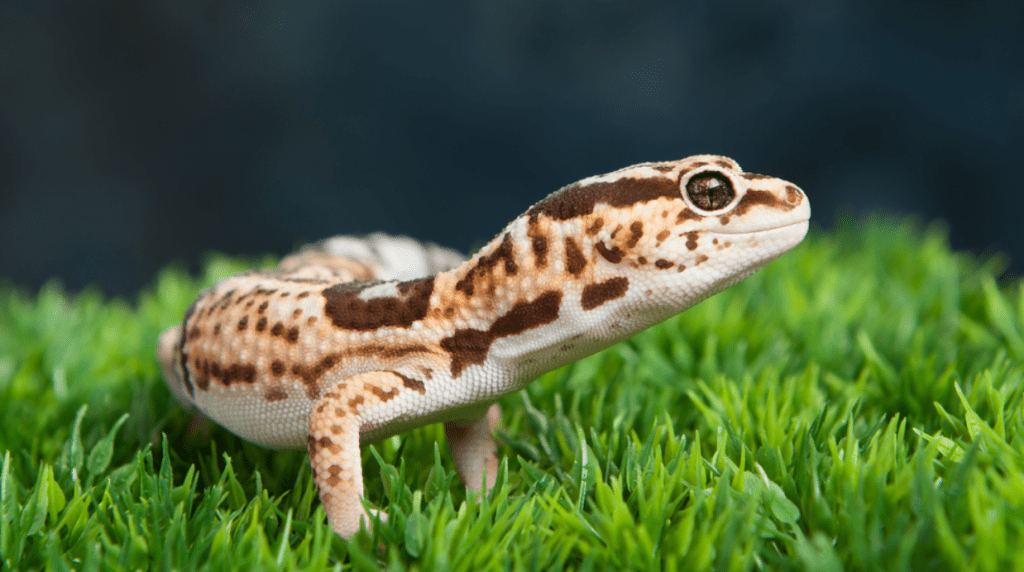Are you wondering whether you should get a heat lamp for your leopard geckos? The first question to ask is whether your animal is getting enough heat from its basking lamp. Although your leopard geckos enjoy basking under a heat lamp, they also appreciate secondary belly heat. In addition to basking rocks, they may also enjoy artificial ornaments and heavy natural stones. Place these around their basking area. However, keep in mind that natural stones may become too hot if you place them too high. To prevent burns, check the surface temperature first before placing your leopard gecko on top of it.

How to keep the temperature stable
Leopard geckos are native to the deserts of Asia, so they are used to hot, dry conditions. In captivity, they can be kept in a vivarium, which is a specially-designed enclosure that mimics their natural habitat. One of the most important aspects of caring for a leopard gecko is maintaining the correct temperature in their vivarium. During the day, the temperature should be kept between 78 and 88 degrees Fahrenheit. At night, it can be allowed to drop to around 70 degrees. A heat lamp can be used to create a warm basking spot, and a cool hide should also be provided for your gecko to retreat to if they get too warm. By creating a stable temperature gradient in their vivarium, you can ensure that your leopard gecko stays healthy and comfortable.
The do’s and don’ts of lighting for leopard geckos
There are many factors to consider when setting up a leopard gecko tank. While they are nocturnal creatures, they need to be exposed to light for most of the day. Ideally, you should keep the lighting in your tank to 12 hours on, 12 hours off. This is similar to the natural lighting cycle in their natural habitat. However, keep in mind that UVB lamps should not be on at night. Excessive UVB rays can interfere with their natural sleeping schedule and should be turned off.
The best type of lamp to use for your pet’s tank depends on the species. Patternless and albino leopard geckos are more sensitive to UVB than others. You can use a T8 6% bulb instead of an Arcadia T8. You should aim for a UV Index between 0.5 and 0.7 and use the Solarmeter 6.5 to measure it.
The right vivarium setup
The best vivarium setup for a leopard gecko should be large enough to accommodate its growth. Unlike other lizards, leopard geckos cannot climb on glass, making glass terrariums the best choice. Glass terrariums are also very inexpensive and readily available on sites like Amazon. Wire cages are not suitable for leopard geckos as they don’t retain heat well and may trap the animals. Therefore, you should always opt for a glass vivarium.
A gecko needs a moist retreat to shed its skin. In addition to this, the terrarium should be set up with a humid area. Humidity is essential for geckos, as they are easily affected by dehydration. A humid area can also facilitate shedding and provide a place for the females to lay their eggs. Make sure the vivarium is set up with the appropriate heating and humidity control equipment.

How do you know that your leopard gecko has enough heat?
The first step in heating your leopard gecko’s tank is to attach a heat mat. These mats are generally adhesive and will stick permanently to the tank. However, if you remove the mat before using it, you risk damaging the heating element. Place the heating pad under the warmest part of the tank and cover at least 1/3 to half of the tank. If the heat mat does not cover the entire tank, you can move it to a warmer spot.
Light timers are also important. Leopard geckos need light to tell day from night and to maintain their circadian rhythm. It’s good to use light timers to automatically turn on the lights, saving you the hassle of forgetting to turn them on and off. A leopard gecko needs a cycle of at least 12 hours of darkness and 14 hours of light. The light cycle needs to be gradually reduced to ten hours during winter.
Do leopard geckos need a heat lamp?
Leopard geckos are hardy little reptiles. However, a constant temperature gradient in their terrarium is essential to their well-being. The best heat source for leopard geckos is a heat mat, but a bulb will work too as long as it heats the floor and is high enough not to burn them. Using the heat lamp correctly will ensure your gecko’s comfort and safety.
The heat lamp should have separate settings for daytime and nighttime. While UVB light is not necessary for leopard geckos, it’s helpful for their internal clock. Additionally, it provides warmth and simulates their natural behaviors. Choose a lamp with a 5.0 UVB basking bulb and an automatic timer for best results. For small tanks, this amount of light is sufficient. Alternatively, if your leopard gecko’s tank has a temperature control system, a thermostat should be used to regulate the temperature.
Conclusion
The first consideration is temperature. A leopard gecko can tolerate temperatures as low as 16°C (60°F) at night. Many studies have shown that a slight drop in temperature at night is much healthier for reptiles than maintaining constant temperatures. A ceramic heat emitter is another option, as it can raise the ambient temperature in the cage. It can help to reduce the overall temperature in the enclosure.
Reptile heat mats are an excellent alternative to a heat lamp. These heat mats add additional temperature control to the enclosure but should not serve as the primary heat source. They do not offer basking opportunities since they are placed below the substrate. If you want to avoid buying a heat mat, consider getting an affordable and effective reptile heater. But remember that heat mats are not as effective as a heat lamp, and you should not use one as the primary source of heat.



